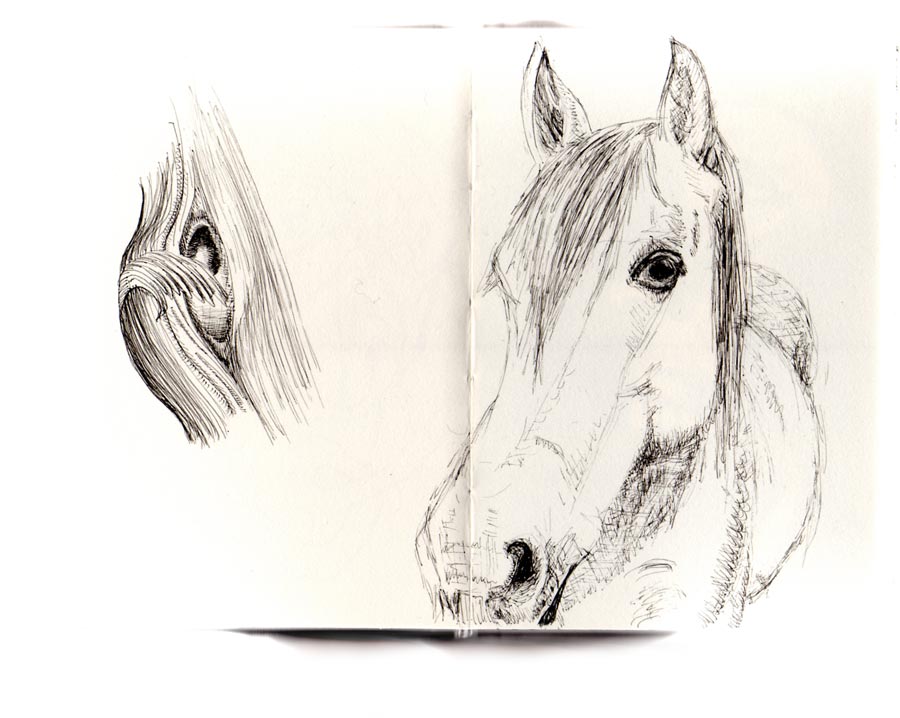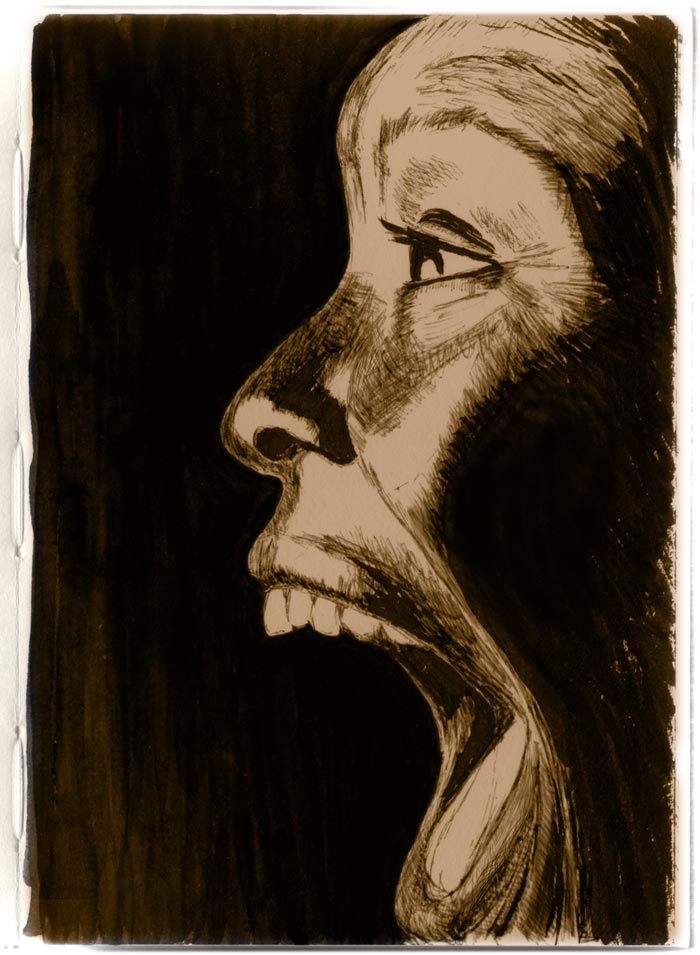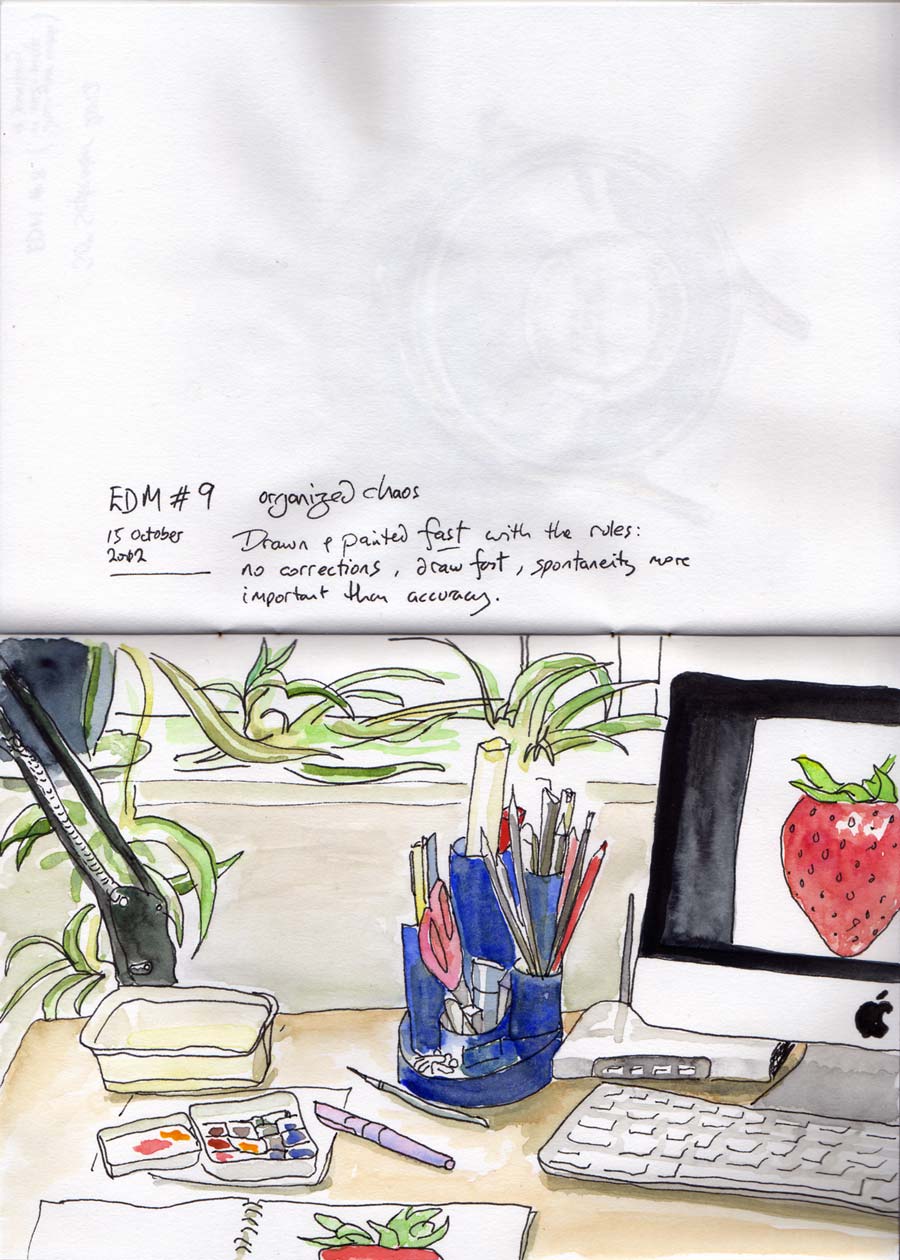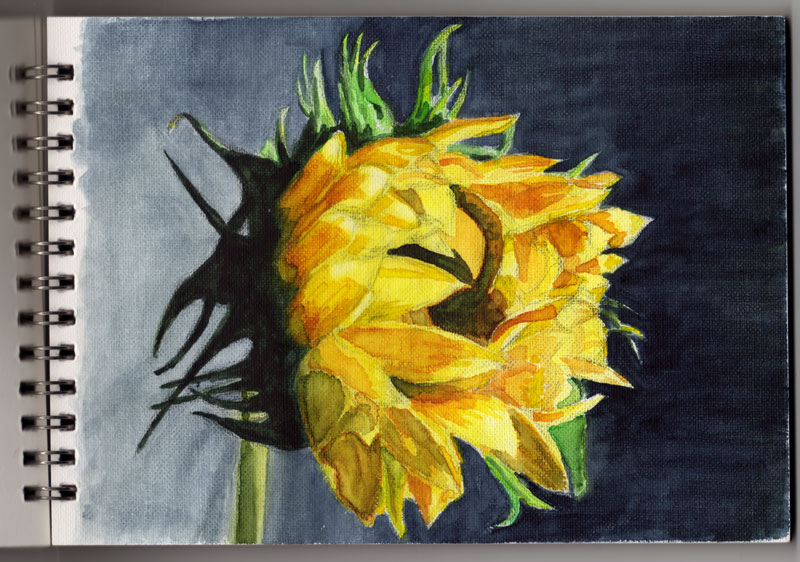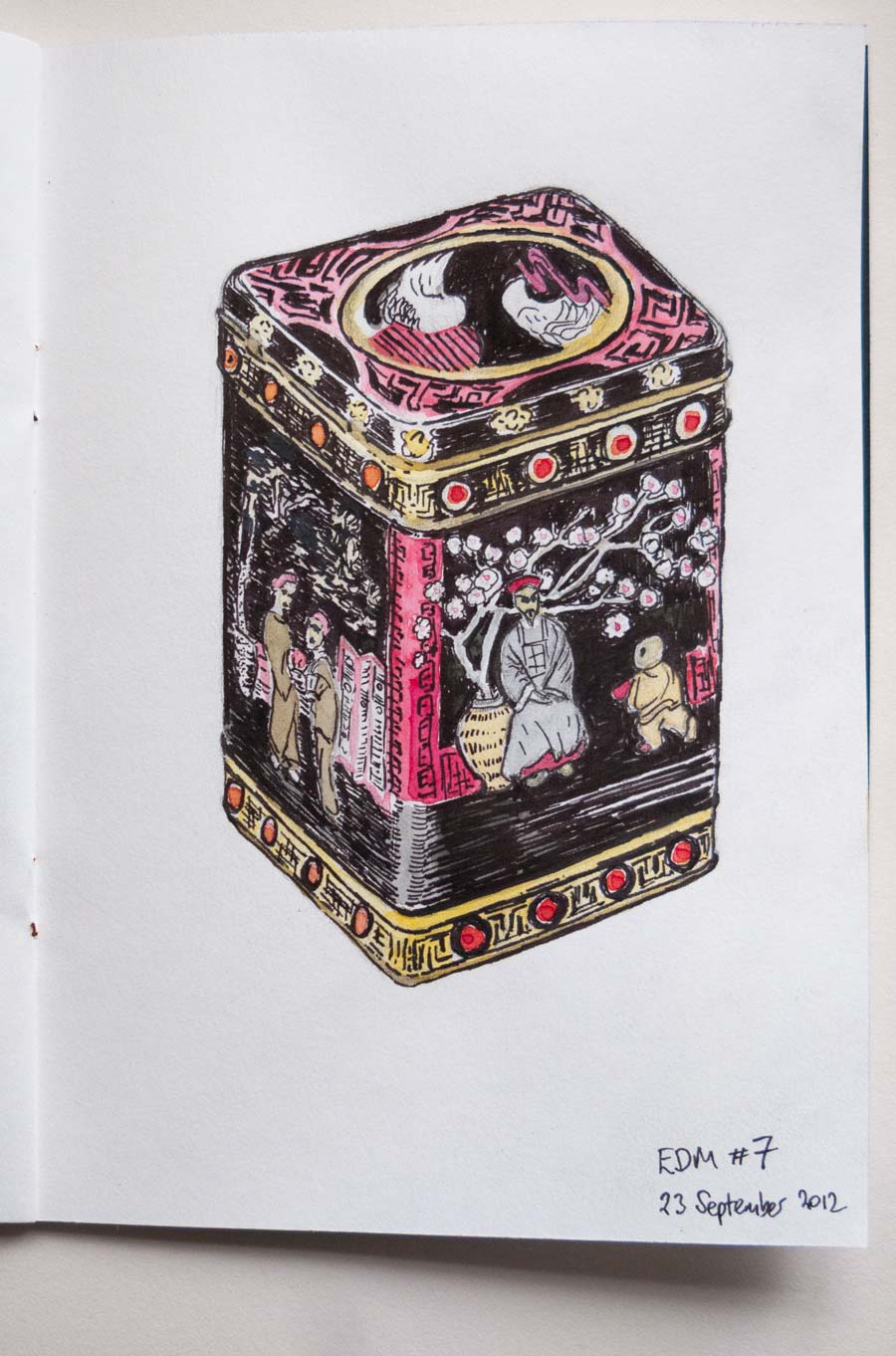More fun with the fountain pen. Seems to be weaning me off the pencil. Multiple strokes build up into a surprisingly dark layer (though these poor scans are overly dark). The paper in this Daler Rowney sketchbook (A5 150gsm cartridge paper) starts to break up if overworked with the fine ‘F’ nib but still stays dark.
The face sketch (copied from a photo by Marta Azevedo) was an experiment to see if fountain pen, brush pen and watercolour lamp black will mix when run together. Lamp black and brush pen ink look almost identical on paper, though you can see brush strokes/unevenness in the original which don’t show in these scans. Lexington Gray at its blackest feathers in quite nicely to the brush pen ink.
Corrections and photoshop liberties taken in the final one. Is that cheating? Does it matter?
